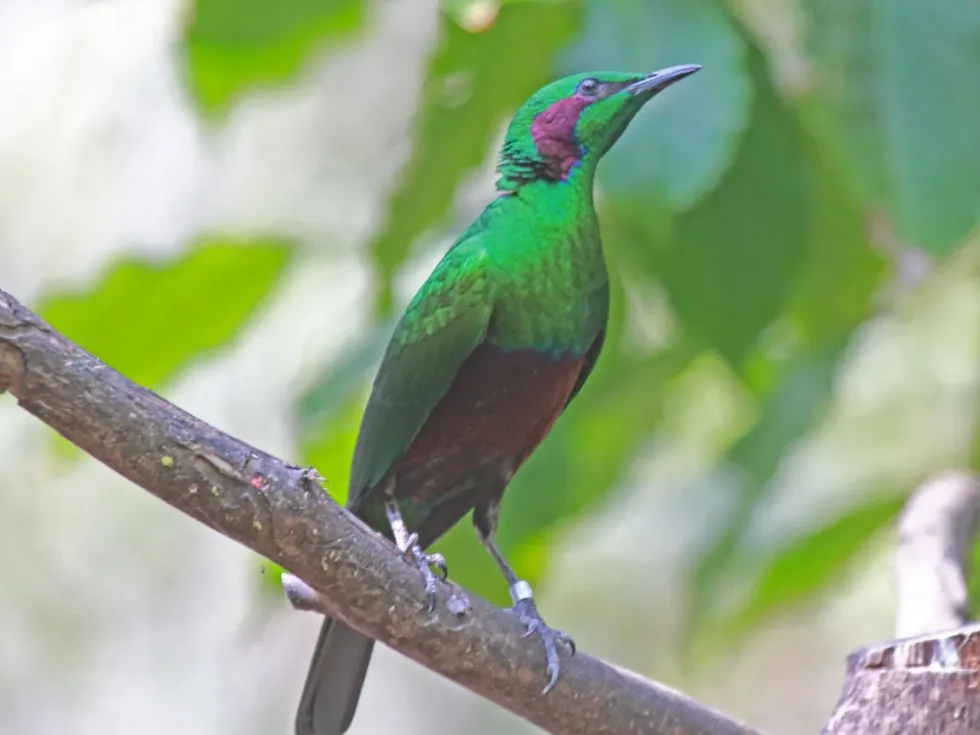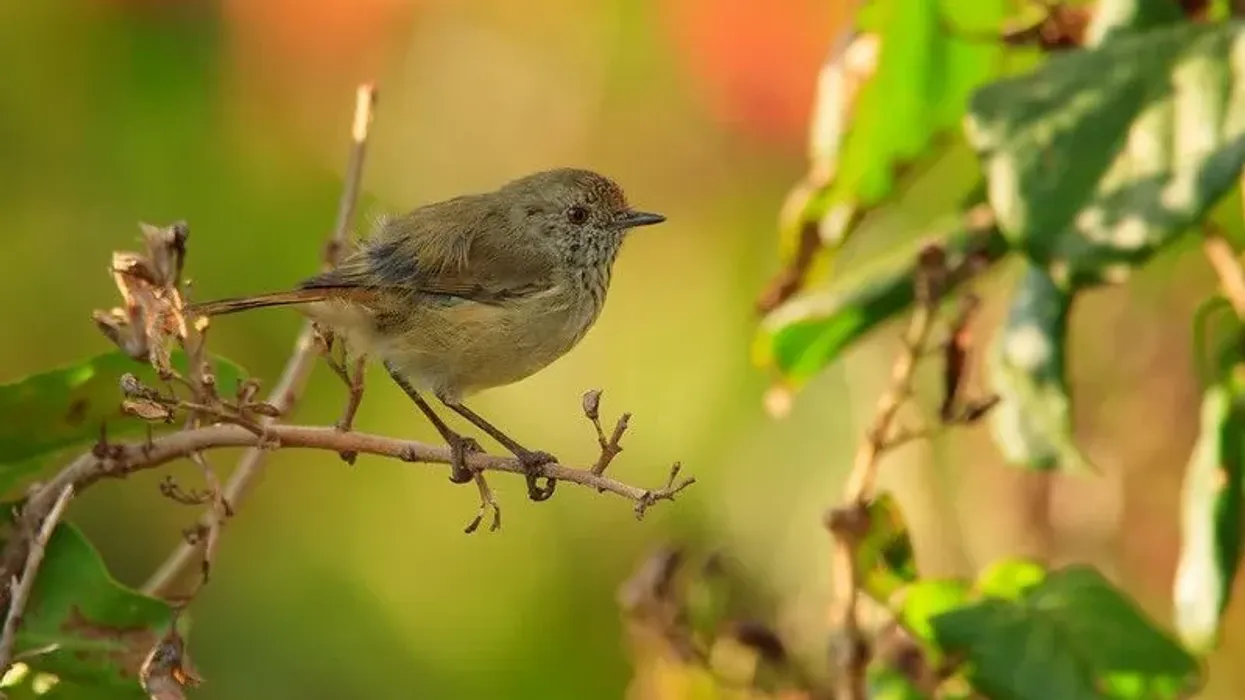The emerald starling, or the iris glossy starling, is a very beautiful species of starling found widely in West Africa. The IUCN has listed them as a species of Least Concern as of 2005.
This bird has an attractive metallic green crown and upper body with a purple belly and ear-coverts. Even though they look spectacular, even though they are caged and sometimes killed. They are chattering birds and are often found in tall trees murmuring to each other while perched in groups.
For more relatable content, check out these common swift facts and canyon wren facts for kids.
Emerald Starling Interesting Facts
What type of animal is an emerald starling?
The iris glossy starling or the emerald starling is a small bird found majorly in Sierra Leone. It builds a cup-shaped nest in the tree cavity and is known to live in flocks.
Their diet includes insects and fruit seeds, and the glossy starlings tend to linger in the orchards, gardens, and lowlands, and grasslands where these foods are widely found. Some other starlings are the violet-backed starling, the European starling, and the metallic starling.
What class of animal does an emerald starling belong to?
The emerald starling, or the glossy starling, belongs to the class of Aves. The glossy starlings have a metallic green crown and upper body with a purple belly and ear-coverts.
How many emerald starlings are there in the world?
There is no exact number given about the emerald starling, but it is estimated population is 500,000, and they are found in large numbers and are declared to be of Least Concern by the IUCN.
Where does an emerald starling live?
The iris glossy starling is a native West African bird. These birds build their nest in the trees of lowlands and savana of Cote d'Ivoire (Ivory Coast), Guinea, and Sierra Leone.
What is an emerald starling's habitat?
They build a cup-shaped nest in tree cavities. Both the male and the female build the nest, find food together, and bring it home to their chicks. They mostly prefer woodland or savanna as their habitat.
Who do emerald starlings live with?
The emerald starling mostly lives in flocks of 15-20 birds, but sometimes they form even larger groups. They build their nest in tree cavities or tree stumps.
How long does an emerald starling live?
The emerald green starling lives up to seven years in the wild, but in captivity, these species have been observed to live up to 25 years.
How do they reproduce?
During the emerald starling breeding season, both male and female starlings build a cup-shaped nest together in the tree cavity. The female birds lay three to four eggs and incubate the eggs for 14 days. The eggs are pale blue in color speckled with reddish-brown.
When the eggs hatch, the parent birds bring food to the nest and feed the chicks. After 21 days, the chicks leave the nest. Within one year, these birds are mature enough to reproduce.
What is their conservation status?
Previously the IUCN had declared the species as Data Deficient as there was not much information available about them to prove them as least concern. Later the researchers found that they were found sufficiently, and thus the IUCN declared them as of Least Concern.
They are mainly threatened by mining activities and being caught for the wildlife trade, but that does not have a major effect on their population.
Emerald Starling Fun Facts
What do emerald starlings look like?

Emerald starling (Lamprotornis iris) or iris glossy starling is one of the smallest starlings found in West Africa. It has a metallic green crown and upper body with a purple belly and ear coverts.
They have black eyes and both sexes look alike. The female emerald starling has a brood patch on their stomach that helps them during incubation for transferring heat to the eggs.
How cute are they?
The emerald starling is very cute with their vibrant metallic green crown and upper body and purple belly and ear-coverts; they look absolutely dashing and are definitely a treat for sore eyes.
How do they communicate?
The iris glossy starling has nasal and squeaky calls. They are often observed to murmur to each other whether it is while resting or flights they communicate with each other. They also mimic the call of other birds.
How big is an emerald starling?
It is estimated that the average length of an emerald starling range between 7.5-9.1 in (19-23 cm), and their wingspan range between 12-17 in (31-44 cm). They are one of the smallest bird species found in Sierra Leone, West Africa.
How fast can an emerald starling fly?
The emerald starling bird can fly up to 37-50 mph (60-80 kph) during the migration, but they are very fast fliers which can make them less vulnerable to their predators.
How much does an emerald starling weigh?
The weight of an iris glossy starling range between 2.0-3.6 oz (58-101 g). They are very lightweight bird species.
What are the male and female names of the species?
The emerald starling is distinguished as the male or female emerald starling. They don't have any specific names as such.
What would you call a baby emerald starling?
The babies are called juveniles or chicks.
What do they eat?
The glossy emerald starling has fruit seeds, figs, hargona berries, worms, fruits, small insects as their omnivorous diet. They sometimes catch insects mid-flight and use their beak to find underlying fruit seeds. In captivity, they should be given a diet full of proteins and fruits.
Are they harmful?
Yes, the starling species are harmful, and they are considered disease-carrying birds that often transfer their diseases to other animals and humans. Their dropping is also toxic, and they should be handled wearing protective gloves.
Would they make a good pet?
They might make great pets as the starlings are known to be friendly and smart bird species. They can even learn to speak as they are good at mimicking other birds and animals. But they also carry diseases, and it may not be healthy to keep them as pets.
Did you know...
The government does not protect the emerald starling, and they are allowed to be killed as the starlings are adequately present. But this means that their life is always under threat, even more so by humans.
In addition, mining activities and the wildlife trade threaten them severely. This is unfortunate as these birds are a true treasure to the wildlife and deserve protection.
Are emerald starlings rare?
The iris glossy starlings are not rare; they are found in adequate amounts in West Africa. Previously this bird species was declared by the IUCN as Data Deficient, but later in 2005, their status was changed to Least Concern.
Do starlings fight to the death?
Sometimes the starlings can be aggressive, especially during the breeding season, and they might turn up to be fighting to the death. They are even aggressive and fight for their food.
Here at Kidadl, we have carefully created lots of interesting family-friendly animal facts for everyone to discover! Learn more about some other birds from our black cuckoo facts and Anna's hummingbird facts pages.
You can even occupy yourself at home by coloring in one of our free printable Emerald starling coloring pages.









